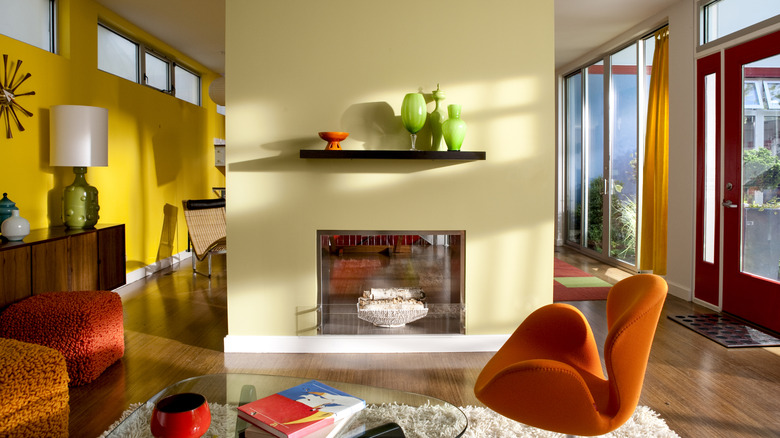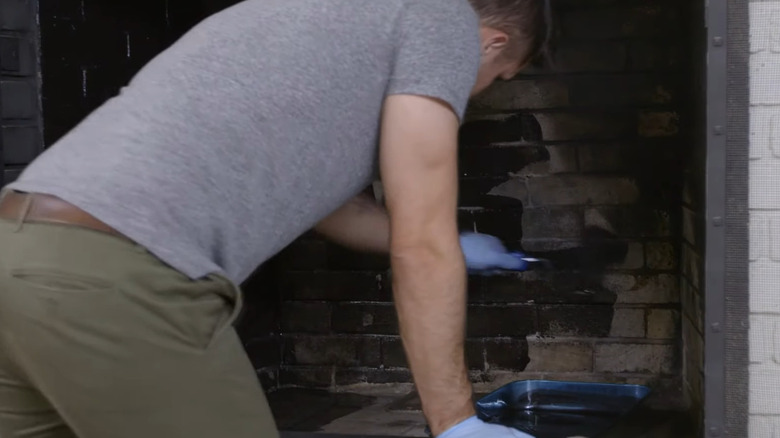The Important Tip To Remember When Painting Inside A Fireplace
We may receive a commission on purchases made from links.
There's nothing cozier than lighting a fire on a chilly day, with your entire family gathered around enjoying time with one another. It's as much motivation as you may need to get that fireplace upgrade you've been meaning to do done. And while there are many creative fireplace makeover ideas that are sure to blow you away, a new paint job is much less labor-intensive than, let's say, replacing stone. Painting your fireplace is a relatively simple and budget-friendly way to decorate your house by upgrading your living room with a fireplace facelift. However, before you tackle this project, there are a few very key things to keep in mind before taking a brush inside the fireplace, in particular. Paramount among them is using the correct paint needed for a fireplace's function, particularly for the high temperatures.
In order to maintain the health of your fireplace and keep the paint looking fresh, you need to be sure you're using high-heat resistant "fireplace paint." While you may want to use leftover paint from your living room walls to match your current décor, this is an unsafe idea since interior paints, like latex paint, don't do well against heat, and oil-based paints can be flammable. Even high-heat tolerant paints, which may work for a simple DIY radiator cover upgrade, won't do since they're not meant to be held up to a flame. Therefore, make sure you're specifically using a paint meant for fireplace levels of heat, and don't compromise your fireplace's looks or function.
Everything you need to know about fireplace paint
There are various levels of heat resistance paints available, and not all are created equal for fireplaces. Some paints, like Rustins Heat Resistant Paint can only handle temperatures of around 430°F. As some wood-burning fireplaces can reach up to 600°F to 1,200°F, you risk some damage. Even chimney flue fireplaces can get up to 500°F, so getting a high heat-rated paint isn't just a gimmick, it's a matter of safety. Stove and fireplace paint, in contrast, can withstand temperatures of 1,200°F. Rutland Stove Paint, for example, is a universal high-heat-tolerant paint that performs well on masonry, motor, and even metal if you need to paint the inside of your wood-burning stove.
Both flat and glossy/satin finishes are available for these paints, though options with a "fireplace glow" finish are popular to radiate a warm glow. It exists in both liquid paint form and spray can form. The latter can make for a very quick project, without having to worry about the fuss of tools like rollers or brushes, and can overall take much less time (as little as a single day).
Whichever paint form, finish, or brand you choose, there are a couple of tips when it comes to painting over your fireplace, particularly brick. First, ensure you thoroughly clean the interiors of your fireplace so that the paint sticks well to the surface it's meant to. Additionally, the interior of the fireplace needs a brick or masonry primer to make sure that your application is seamless. From there, you'll have an upgraded, but safe, fireplace to enjoy!

